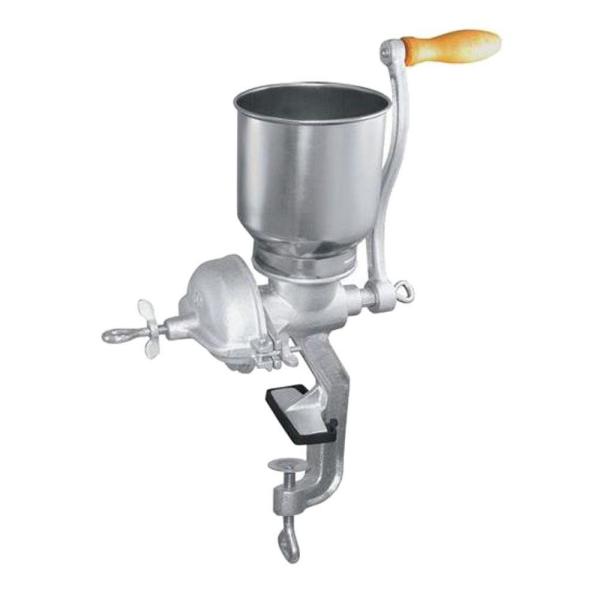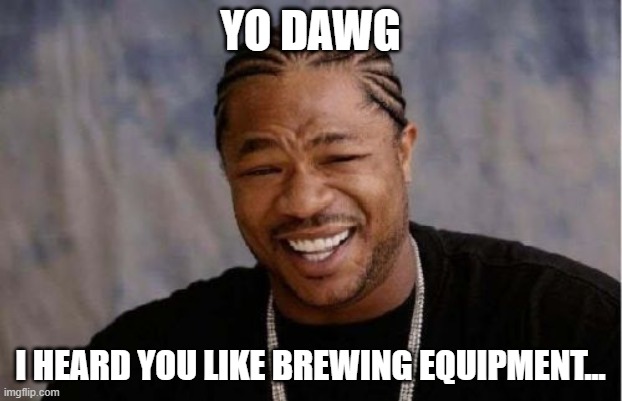Table of Contents
Intro
I wanted to provide a brief history of my brewing endeavors for those looking to get into the hobby or those just interested in learning from some of the mistakes I’ve made. In later entries I plan to provide tips, recipes, and other brewing information, but right now, we’ll travel back to 2015.
In the beginning there was extract
My very first brew I ever made was back on a cold day in January 2015 in Minnesota. As most do, I started with an extract kit, “Hop Scare IPA”. I was so pumped about it that I created a video of the process. I had a decent boil kettle (which I still use today), a dark star burner, a reverse wort chiller (high tech!), and a couple 5 gallon glass carboys. This is it. Overall the beer turned out well considering my experience, and I was now off to the races.
All the Grains

If I remember correctly, I did several more extract kits before exploring all grain brewing. I couldn’t help but wonder how different my beer would taste if I switched, so I bought a used igloo cooler, a cheap Fleet Farm food mill, and moved into the world of all grain brewing. It certainly was better, but it was also considerably more complex, and involved a lot more time and cleaning. I made mistakes like overfilling my cooler with grains, not getting the mash temperature correct (before the days of using software), having a stuck mash (probably the worst brewing experience I’ve had), spilling wort everywhere, and even dropping and breaking a glass carboy on concrete while wearing sandals (the scariest brewing moment). Through all of this I learned to refine my process, recipes, and equipment to brew beer I really enjoyed.
I can make whatever I want?

It wasn’t until I really refined my process down to a manageable and reliable flow that I really could think deeply about what beer styles I liked, what ingredients I wanted to try, and how various choices I made would change the outcome of my beer. This is a moment I think all brewers arrive at after they do enough brewing, and more importantly, after they do enough drinking of their brews.
Recipes and lots of maths

There comes a point where the wall of information seems insurmountable, and trying to plan a brew day takes days of calculating strike water temperatures, heating rates, water absorption, efficiencies, etc… that can really take the fun out of brewing. It was at this point I started looking around to figure out what people did to overcome these hurtles, and shortly after turned to using BrewTarget. BrewTarget is a free piece of software that will help you calculate the things I mentioned above, keep track of your inventory, your beer recipes, calculate ABV based on your grain bill, and much more. After a year or so, I ended up switching to BeerSmith, which is a paid for piece of software that has a few more features. If you’re just getting into using brewing software, I’d recommend starting with BrewTarget to see if it satisfies your needs, and then as you progress, evaluate the extra features BeerSmith has to understand whether you’re willing to make the small investment. In another post I will detail my progression of recipe creation, brew day planning, and even share some recipes. For now, let’s continue down memory lane.
Pimp my brewing equipment

It’s inevitable that one starts to research how better equipment can save a brewer time and effort, improve temperature accuracy, and enable methods such as step mashing. Equipment starts to fail and why not trade up instead of buying the same stuff? This was what led me down the path of switching to RIMS (Recirculating Infusion Mash System). I really liked the idea that I could just set a temperature and let it go. This really changed my ease of brewing, which shouldn’t be confused with ease of cleaning, as this particular system increases my cleaning time and effort. With this system I am able to comfortably brew in the dead of winter and not worry about opening up my mash tun to see how things are going or to add things like PH stabilizer. In a later post I will go over the details of my system and what I like and don’t like about it.
Brewing Today
My frequency of brew days has decreased over the past year due to other interests and family life, however, I very much look forward to my next brew day and plan to continue this wonderful exploration of the practical and tasty science of creating beer.
